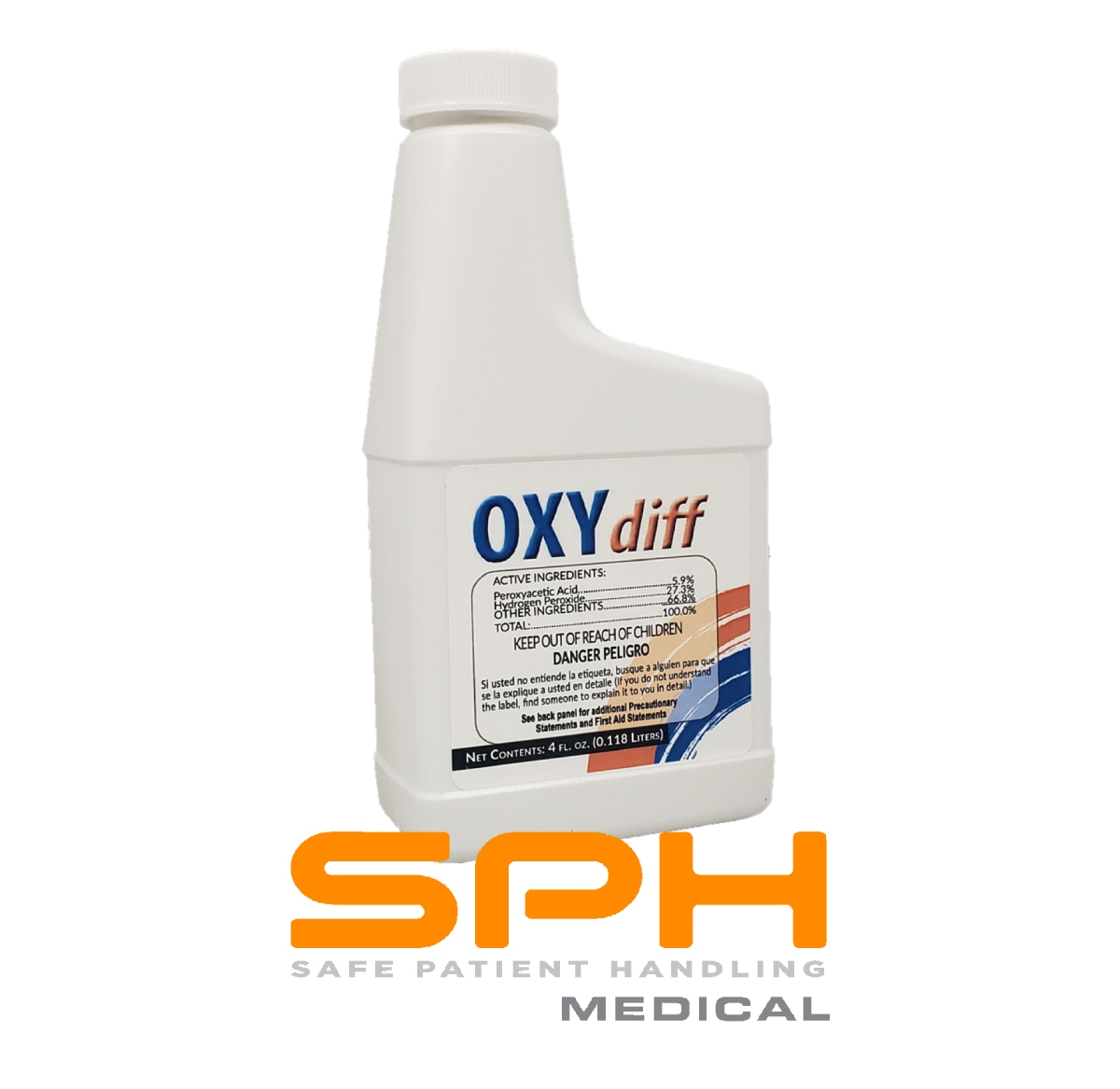Despite having a reputation for being one of the most sterile places one could ever visit, hospitals can sometimes be a breeding ground for infections. And this unsettling reality is well documented in multiple studies, one of which comes from the Centers for Disease Control and Prevention (CDC). The study revealed an estimated 1.7 million hospital patients develop a hospital-acquired infection every year in the U.S. These infections are byproducts of viral, bacterial, and fungal pathogens. And these pathogens can cause bloodstream infections (BSIs), pneumonia, urinary tract infections (UTIs), and surgical site infections (SSIs). But it does not end there; these pathogens can also increase a hospital patient’s chances of developing C. diff. For this very reason, SPH Medical encourages all hospitals to make OXYdiff their go-to hard surface disinfection product.
Hospital-Acquired Infections (HAI’s): What You May Not Have Known About C. Diff
It is no surprise that patients sometimes develop infections while in a hospital, but what is surprising, however, is some infections are far more common than others, one of them being C. diff. Also known as Clostridioides difficile or C. difficile, C. diff is a hospital-acquired infection that causes severe diarrhea and increases a patient’s chances of developing colitis. C. diff accounts for roughly 200,000 of the 1.7 million hospital-acquired infections recorded each year, and the annual cost of treating them is over $6.3 billion. Along with diarrhea and an inflamed colon, which goes hand-in-hand with colitis, C. diff can cause the following symptoms:
- Fever
- Stomach tenderness or pain
- Loss of appetite
- Nausea
Why Is C. Diff So Common in Hospitals?
Studies show that C. diff is a bacterium that enters the body through the mouth. Individuals with C. diff often shed spores, which generally make their way onto surfaces throughout the hospital. If those surfaces do not undergo proper sanitizing, anyone who touches them and then touches their mouth with the same hand can develop C. diff themselves. For this very reason, SPH Medical encourages all hospitals to make OXYdiff, a broad-spectrum disinfectant approved by the U.S. Environment Protection (EPA) to kill C. diff, MRSA, and other harmful infections, their go-to hard surface disinfection product.
Choosing the Right Sanitizing Product Matters More Than You Might Think
When it comes to professional-grade sanitizers, some are just better than others. With a 2 min kill time for destroying C. diff spores and their associated pathogens, OXYdiff is a prime example of one of the better ones, surpassing even professional-grade bleach as it is non-corrosive. And you don’t have to wear protective equipment when handling it either.
What Does It Mean to Be on the EPA’s Emerging Pathogens Approval List?
The EPA awards what are known as emerging viral pathogen claims to products that have demonstrated an ability to kill hard-to-kill viruses based on previous EPA-approved claims, one of which is COVID-19. Because OXYdiff recently received this distinctive honor, the EPA, without pushing for additional testing, approved the sanitizer for killing COVID-19. In response, many hospitals nationwide have made it their sanitizer of choice.
Bottom Line
All in all, OXYdiff is a professional-grade sanitizer that safeguards the lives of patients while lowering the cost associated with keeping hospitals free of germs, viruses, and spore-forming bacteria. For more information regarding how this EPA approved, powerful sanitizer, comprising a patented no rinse no wipe solution, can benefit your hospital, consider contacting SPH Medical today.

